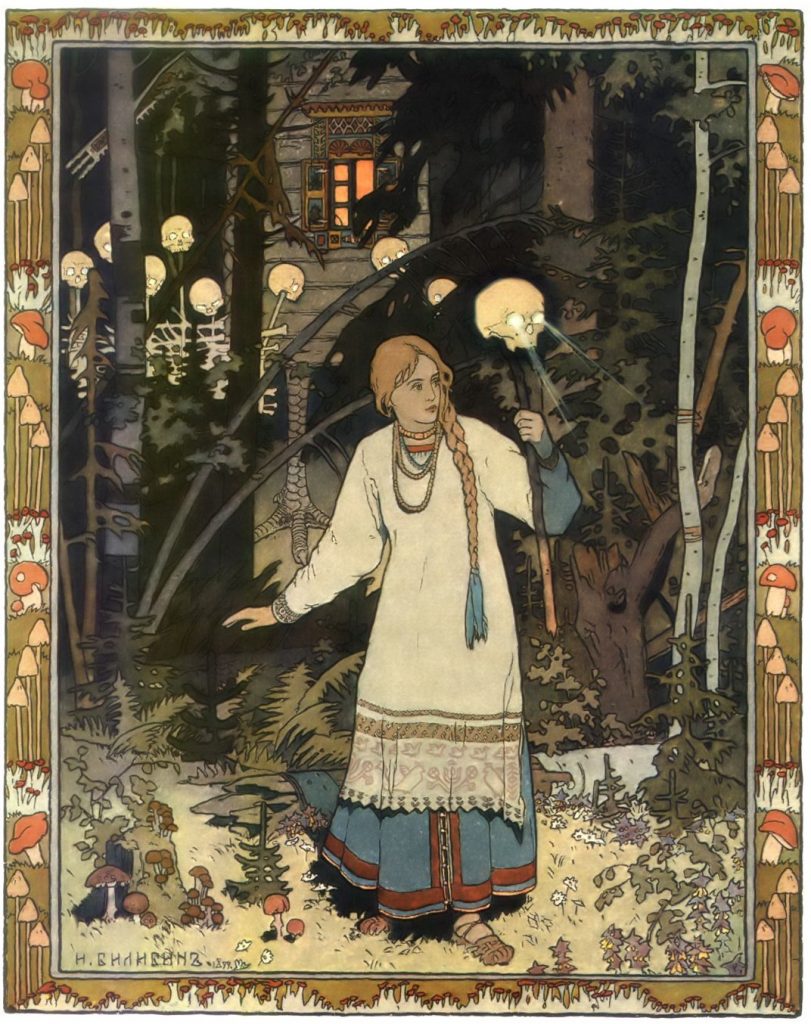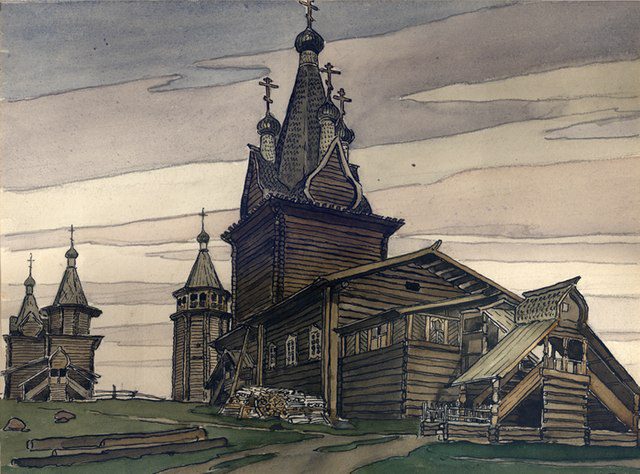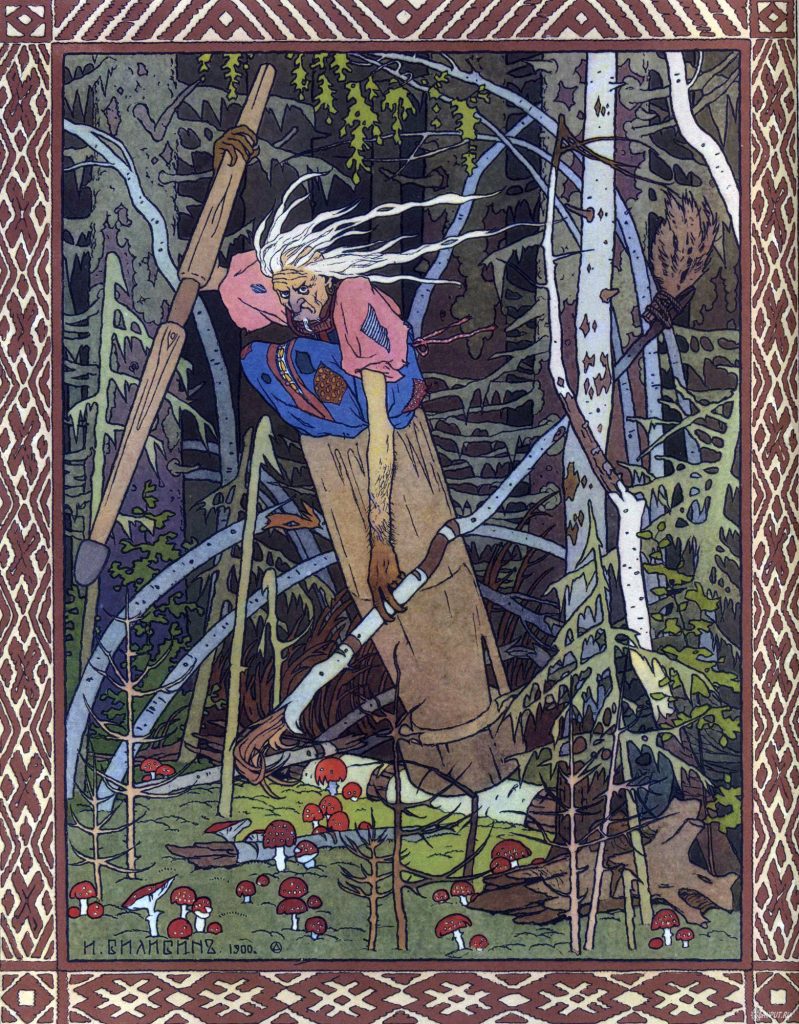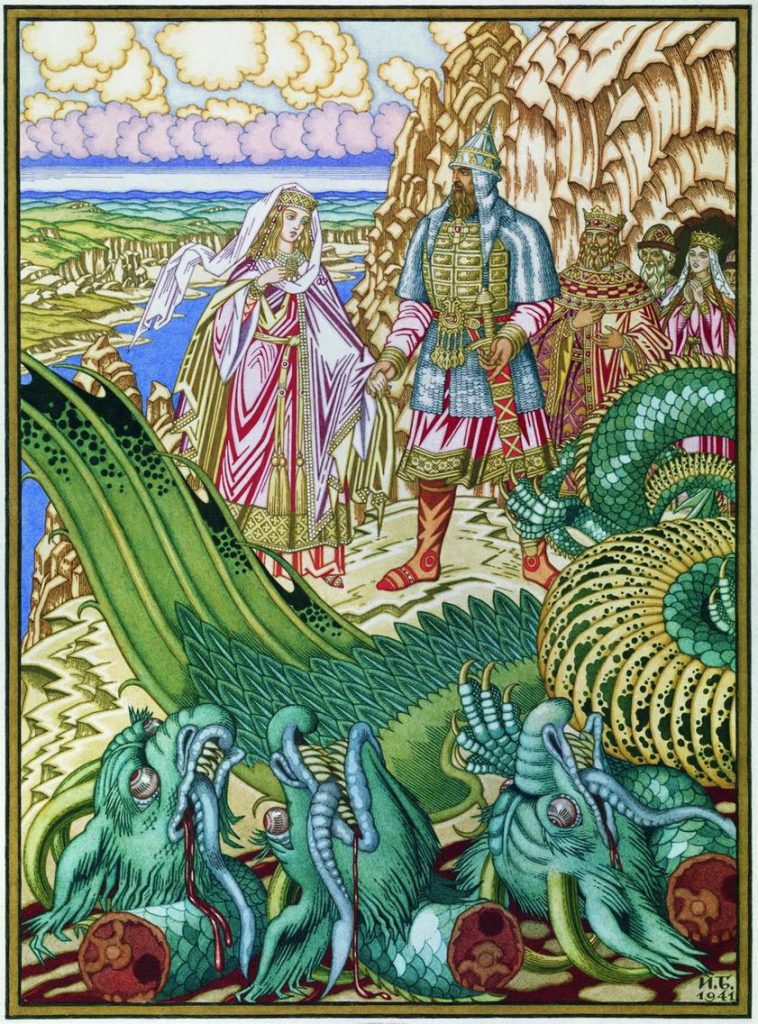
Ivan Bilibin, a Russian illustrator and stage designer, was born on August 16, 1876, in Tarkhovka, near St. Petersburg, Russia. Bilibin’s artistic career unfolded during a transformative period in Russian art, marked by a resurgence of interest in national folklore and a rejection of Western academic traditions. He became a prominent figure in the Russian Art Nouveau and Symbolist movements, leaving a lasting impact on the world of illustration and theatrical design.
Bilibin studied at the Anton Ažbe Art School in Munich and later at the Higher Art School in St. Petersburg. Despite his exposure to Western artistic trends, Bilibin developed a keen interest in Russian folklore, traditional crafts, and the art of iconography. His early works, such as illustrations for Russian fairy tales, reflected a fusion of Art Nouveau aesthetics with distinctly Russian themes.

One of Bilibin’s significant contributions was his role in the revival of the lubok tradition, a form of popular print that featured simple and bold woodcut illustrations. Inspired by traditional Russian lubki and icon painting, Bilibin’s illustrations for folk tales and epics captured the spirit of Russian mythology and contributed to the broader cultural movement aimed at reconnecting with the country’s cultural heritage.
Making books come alive
Bilibin’s intricate and vibrant illustrations adorned numerous books, including works by Alexander Pushkin, Nikolai Gogol, and the fairy tales of the Brothers Grimm. His distinctive style, characterized by flowing lines, bright colors, and a focus on narrative elements, made his illustrations instantly recognizable.

In addition to his contributions to book illustration, Bilibin made significant strides in the field of theatrical design. He collaborated with Sergei Diaghilev’s Ballets Russes, creating set designs for productions such as “The Firebird” (1909) and “The Golden Cockerel” (1914). Bilibin’s stage designs seamlessly blended his love for Russian folklore with a modern sensibility, earning him acclaim for his innovative approach to visual storytelling in the realm of theater.
The Russian revival
The artist’s commitment to the Russian Revival movement, which sought to celebrate national identity and reject Western influences, aligned with the cultural and artistic shifts taking place in Russia during the early 20th century. Bilibin’s emphasis on folk traditions and his ability to translate them into contemporary visual language resonated with the broader cultural aspirations of the time.
After the Russian Revolution in 1917, Bilibin continued his artistic activities, working on various projects, including stage designs for the Soviet theaters. However, as the political climate evolved, Bilibin faced challenges, and his later years were marked by periods of political scrutiny.

Ivan Bilibin died on February 7, 1942, in Leningrad (now St. Petersburg). His legacy endures through his iconic illustrations, which continue to captivate audiences with their timeless charm and their role in preserving and popularizing Russian folklore. Bilibin’s artistic vision, rooted in a deep appreciation for tradition and folklore, remains an integral part of Russia’s cultural heritage and the broader history of illustration and stage design.




